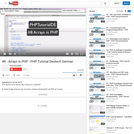
In dieser Folge schauen wir uns einen weiteren Bestandteil von PHP an: Arrays.
- Subject:
- Applied Science
- Computer Science
- Material Type:
- Lecture
- Provider:
- PHPTutorialDE
- Author:
- PHPTutorialDE
- Date Added:
- 01/01/2010

In dieser Folge schauen wir uns einen weiteren Bestandteil von PHP an: Arrays.

This Remote Learning Plan was created by Allison Pontious in collaboration with Rick Meyer as part of the 2020 ESU-NDE Remote Learning Plan Project. Educators worked with coaches to create Remote Learning Plans as a result of the COVID-19 pandemic.The attached Remote Learning Plan is designed for second grade math students. Students will use addition to find the total number of objects arranged in an array no larger than five rows and five columns and write an equation to express the total (e.g., 3 + 3 + 3 = 9).https://docs.google.com/presentation/d/15N0sKl_X1AH7aqswY7q-wZz8ZVCBsGdswtWCYPxoYGw/edit?usp=sharing
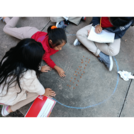
The students will use their knowledge of repeated addition to determine the total number of objects in equal groups.
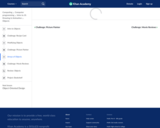
Pamela shows how to store arrays of objects - a very powerful tool for your programs.

Arrhythmias can be detected by seeing ECG waveforms.

Increasing Student Connection and Engagement at the Start of Classes
Short Description:
This resource explores what arrival activities are and suggests ways to use them. It is accompanied by a PowerPoint slide deck that you can modify for your own teaching practice.NewParaThis project is made possible with funding by the Government of Ontario and through eCampusOntario’s support of the Virtual Learning Strategy. To learn more about the Virtual Learning Strategy visit: https://vls.ecampusontario.ca
Long Description:
Arrival activities are short low-stakes activities that students can do right when they join lectures. They are designed to foster community, develop connections, gather feedback, and enhance student engagement during the opening moments of class. For example, they can invite students to engage with the course; act as wellness check-ins; gather feedback from students; acclimatize students to what participation and engagement might look like in a digital learning environment; and provide opportunities for connection and perspective-taking. This resource includes an overview of arrival activities and has an associated PowerPoint slide deck that you can use and modify for your own teaching practice.
Word Count: 6127
(Note: This resource's metadata has been created automatically by reformatting and/or combining the information that the author initially provided as part of a bulk import process.)
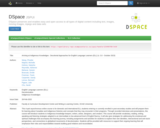
This 4-part asynchronous online course is for domestic and international ELL students entering or currently enrolled in post-secondary studies and will prepare them for learning about Canadian and Indigenous histories and concepts that they may encounter in their programs. Through recorded interviews and presentations, this course will introduce students to Indigenous knowledge keepers, writers, artists, designers, and creators. This course will provide vocabulary, reading, writing, speaking and listening strategies adapted to an intermediate to low-advanced level of English fluency. It will also give strategies for addressing the emotional and spiritual challenges that accompany this learning journey, including assignments and activities for students to explore their own identities, intersectional and anti-racist perspectives, and connections to globalized movements of decolonization. Students will be provided with resources to support their ongoing learning that will emphasize their roles and responsibilities towards building good relations and reconciliation.
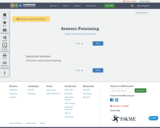
This artcile is about Arsenic poisoning
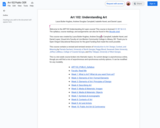
This is a ten-week course broken into thematic topics. Its current design is asynchronous online, though you will find a mix of asynchronous and synchronous activity options. It can be modified for any modality. Included are weekly activities, exercises, projects, and slides following the provided syllabus.
• ART102 Syllabus
• Week 1: What is Art? What do you want from art?
• Week 2: Elements of Art: Formal Elements
• Week 3: Elements of Art: Principles of Design
• Week 4: Describing Art
• Week 5: Media & Materials: Images
• Week 6: Media & Materials: Objects
• Week 7: Symbols & Iconography
• Week 8: Contexts of Art
• Week 9: Art and Artists
• Week 10: Public Art/Art & Controversy

The Open for Antiracism (OFAR) Program – co-led by CCCOER and College of the Canyons – emerged as a response to the growing awareness of structural racism in our educational systems and the realization that adoption of open educational resources (OER) and open pedagogy could be transformative at institutions seeking to improve. The program is designed to give participants a workshop experience where they can better understand anti-racist teaching and how the use of OER and open pedagogy can empower them to involve students in the co-creation of an anti-racist classroom. The capstone project involves developing an action plan for incorporating OER and open pedagogy into a course being taught in the spring semester. OFAR participants are invited to remix this template to design and share their projects and plans for moving this work forward.

Art 200 is an introductory course that chronicles the major developments in art that span from the Upper Paleolithic Period through the Fourteenth Century. This broad, comprehensive survey details this time period’s diverse range of artistic output while identifying the wider contexts (historical, social, cultural, religious) that affected the characteristics and motivations of early art production.
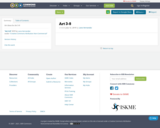
Art ideas for Art 3-8

Sanaz Mazinani is an artist with a background in political activism who uses art to inspire dialogue about perceptions of cultural identity. In the latest episode of Art School, she describes her current art practice. Using online media focusing on world news and pop culture as her source material, she creates symmetrical photo collages and videos that abstract familiar images and invite viewers to reconsider visual culture and its meaning and influence on public opinion and social justice. In this episode of Art School, she describes her current art practice and the intentions behind her recent installation at the Asian Art Museum in San Francisco.
In the second video Mazinani expands on the intention of traditional of Islamic ornamentation.
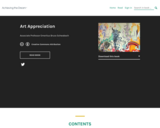
Word Count: 117601
(Note: This resource's metadata has been created automatically by reformatting and/or combining the information that the author initially provided as part of a bulk import process.)
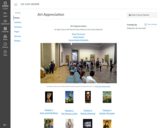
(Google Drive) Text of the book in “chapters” arranged by module—as well as assignments
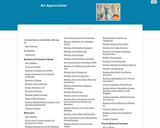
This course is particularly focused on helping you develop visual literacy skills, but all the college courses you take are to some degree about information literacy. Visual literacy is really just a specialized type of information literacy. The skills you acquire in this course will help you become an effective researcher in other fields, as well.

This lesson is aimed at adults who have experienced an interruption of their education for whatever reason. The purpose is to develop reading and writing skills while learning how to express their opinions regarding an art form.
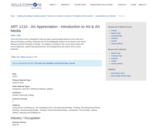
This entry-level course is designed to help you gain a general appreciation for art as well as to help you develop a working vocabulary for the knowledgeable analysis of art based on the Visual Elements and the Principles of Design. The syllabus is included in the course and contains the course objectives, student learning outcomes, list of assignments and names of the course textbooks.
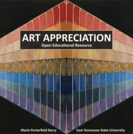
The Art Appreciation course explores the world’s visual arts, focusing on the development of visual awareness, assessment, and appreciation by examining a variety of styles from various periods and cultures while emphasizing the development of a common visual language. The materials are meant to foster a broader understanding of the role of visual art in human culture and experience from the prehistoric through the contemporary.
This is an Open Educational Resource (OER), an openly licensed educational material designed to replace a traditional textbook. The course materials consist of 24 lessons each with a presentation, reading list, and/or sample assignment. For ease of adapting, materials are available as PDFs and Microsoft PowerPoint or Word documents.
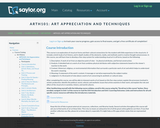
This course is an exploration of visual art forms and their cultural connections for the student with little experience in the visual arts. It includes a brief study of art history, and in-depth studies of the elements, media, and methods used in creative thought and processes. It is the only resource I have found that approximates techniques, media, and an overview of different processes that is usually the first half of a printed text on art appreciation or an introduction to art. This is geared toward an undergraduate, lower-level student population. The art history survey is inadequate, but combined with another source, like Boundless' art history, this can be a complete text for an Art 100 course.